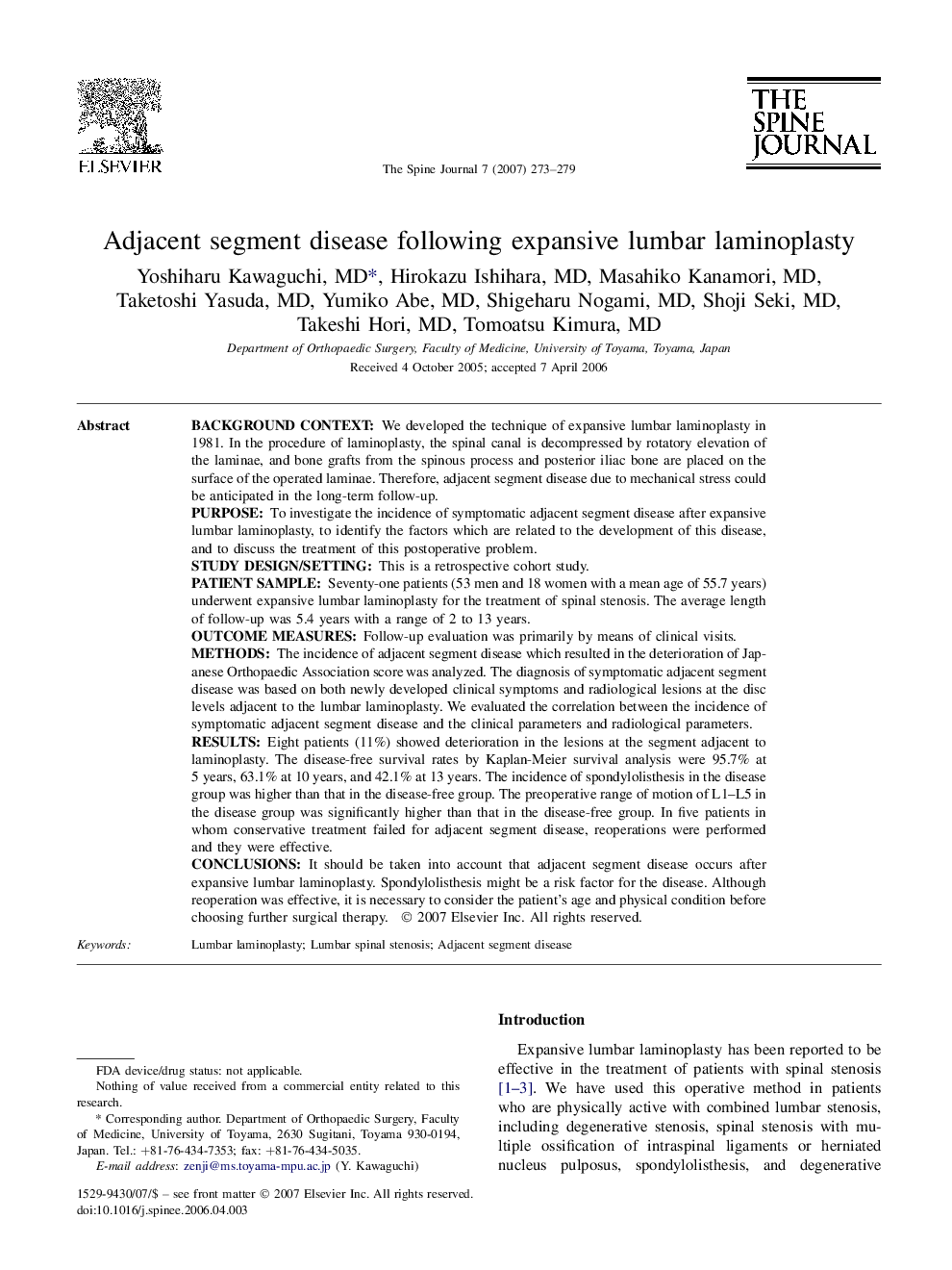| کد مقاله | کد نشریه | سال انتشار | مقاله انگلیسی | نسخه تمام متن |
|---|---|---|---|---|
| 4099491 | 1268642 | 2007 | 7 صفحه PDF | دانلود رایگان |

Background contextWe developed the technique of expansive lumbar laminoplasty in 1981. In the procedure of laminoplasty, the spinal canal is decompressed by rotatory elevation of the laminae, and bone grafts from the spinous process and posterior iliac bone are placed on the surface of the operated laminae. Therefore, adjacent segment disease due to mechanical stress could be anticipated in the long-term follow-up.PurposeTo investigate the incidence of symptomatic adjacent segment disease after expansive lumbar laminoplasty, to identify the factors which are related to the development of this disease, and to discuss the treatment of this postoperative problem.Study design/settingThis is a retrospective cohort study.Patient sampleSeventy-one patients (53 men and 18 women with a mean age of 55.7 years) underwent expansive lumbar laminoplasty for the treatment of spinal stenosis. The average length of follow-up was 5.4 years with a range of 2 to 13 years.Outcome measuresFollow-up evaluation was primarily by means of clinical visits.MethodsThe incidence of adjacent segment disease which resulted in the deterioration of Japanese Orthopaedic Association score was analyzed. The diagnosis of symptomatic adjacent segment disease was based on both newly developed clinical symptoms and radiological lesions at the disc levels adjacent to the lumbar laminoplasty. We evaluated the correlation between the incidence of symptomatic adjacent segment disease and the clinical parameters and radiological parameters.ResultsEight patients (11%) showed deterioration in the lesions at the segment adjacent to laminoplasty. The disease-free survival rates by Kaplan-Meier survival analysis were 95.7% at 5 years, 63.1% at 10 years, and 42.1% at 13 years. The incidence of spondylolisthesis in the disease group was higher than that in the disease-free group. The preoperative range of motion of L1–L5 in the disease group was significantly higher than that in the disease-free group. In five patients in whom conservative treatment failed for adjacent segment disease, reoperations were performed and they were effective.ConclusionsIt should be taken into account that adjacent segment disease occurs after expansive lumbar laminoplasty. Spondylolisthesis might be a risk factor for the disease. Although reoperation was effective, it is necessary to consider the patient's age and physical condition before choosing further surgical therapy.
Journal: The Spine Journal - Volume 7, Issue 3, May–June 2007, Pages 273–279